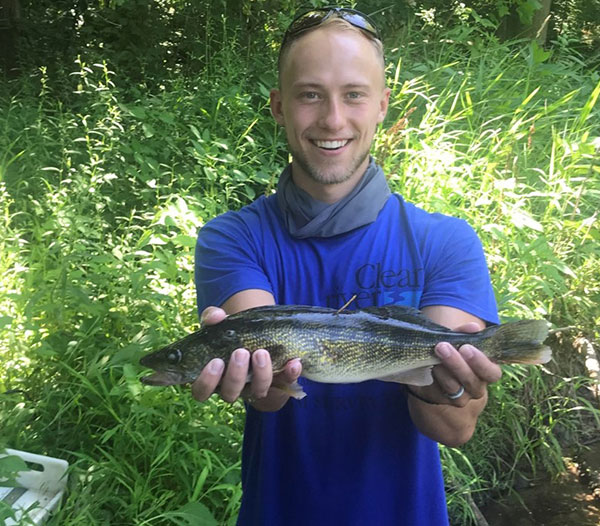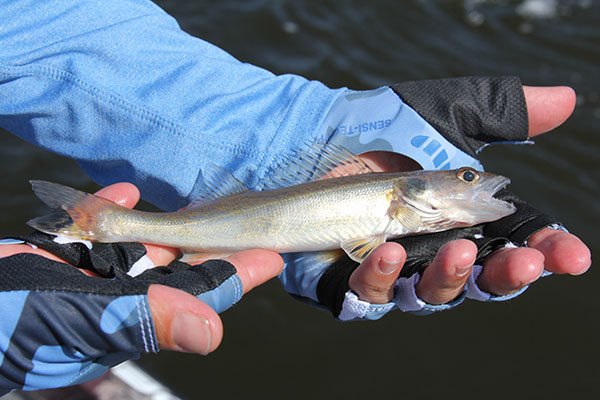- Details
By Louie Stout
Pine and Stone Lake should see quite a few keeper walleye within a couple of years.
Indiana DNR District Fisheries Biologist Tom Bacula did a survey of the two LaPorte County lakes last fall to evaluate the success of lake association and DNR stockings. Indiana had a surplus of walleye fingerlings in 2021 and 2022 and put them in the two lakes last year.
The fish stocked earlier in the year ranged from 5 to 8 inches in length – a good size for excellent survival.
Bacula said he and his crew saw enough of the Indiana fish for the stocking to be considered successful.
- Details
By Louie Stout
 Tagged Walleye
Tagged Walleye
St. Joseph River Biologist Dar Deegan’s tagging program is providing insight into how walleyes move around in the river.
Deegan began a tagging program in 1998 to track the history, movements and growth of walleyes stocked by the Indiana DNR and the Michiana Walleye Club.
Although not all of that data has been analyzed and the project is ongoing, it’s providing interesting clues about walleyes in the river.
It also confirms what most anglers have suspected.
“We’re finding walleye have a significant migratory pattern,” Deegan says. “Very early in the year they move upriver around the dams, but then move downriver to settle into the impounded sections, especially like the Maggie’s Landing area, during summer months.”
The walleyes were 12 inchers or larger at the time of tagging, picked up during fish surveys conducted by his crew over the years. The yellow tags, located on the upper back of the fish, include an identification and phone number stamped into them. The length at the time of capture is recorded along with where it was caught and a scale sample is taken to evaluate the age of the fish.
- Details
By Louie Stout
Much to the chagrin of avid ice anglers, the winter has been pretty darn mild.
What does that mean for our lakes come spring? Will it impact fish in those lakes?
We posed that to northern Indiana and southern Michigan fisheries biologists.
Call it wishful thinking, but one might think that predators fed better through the winter and should show signs of accelerated growth and weight.
Indiana biologist Matt Horsley said it might happen, but unlikely.
“Ice or no ice, fish activity is based upon water temperatures and less about ice cover,” he said. “During winter, temps below ice remain around 37 degrees, and lakes have been hovering at or just above that.”
- Details
By Louie Stout
 Young Walleye
Young Walleye
A survey last fall of the 2021 St. Joseph River walleye stocking indicates lower than expected survival, but it could have been a timing thing.
St. Joseph River biologist Matt Horsley the DNR determines that if it turns up four, one-year-old walleyes per hour the stocking was successful. Last fall, they only got seven in two hours.
“History tells us the stockings do well there, so we still consider it a success,” Horsley said. “Our shocking survey could have been affected by the river, weather and time of year.”
The fish were stocked the previous year in a cooperative effort between the DNR and the Michiana Walleye Association. Another stocking is planned for this fall.


